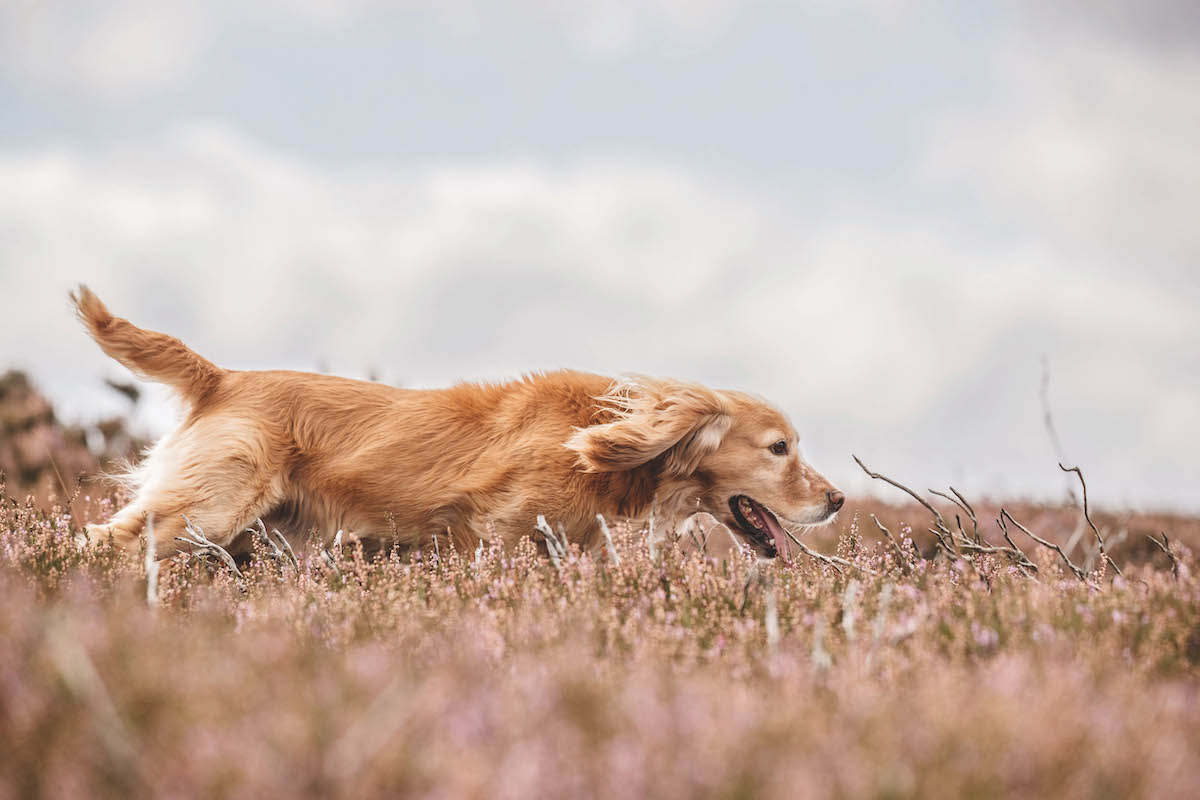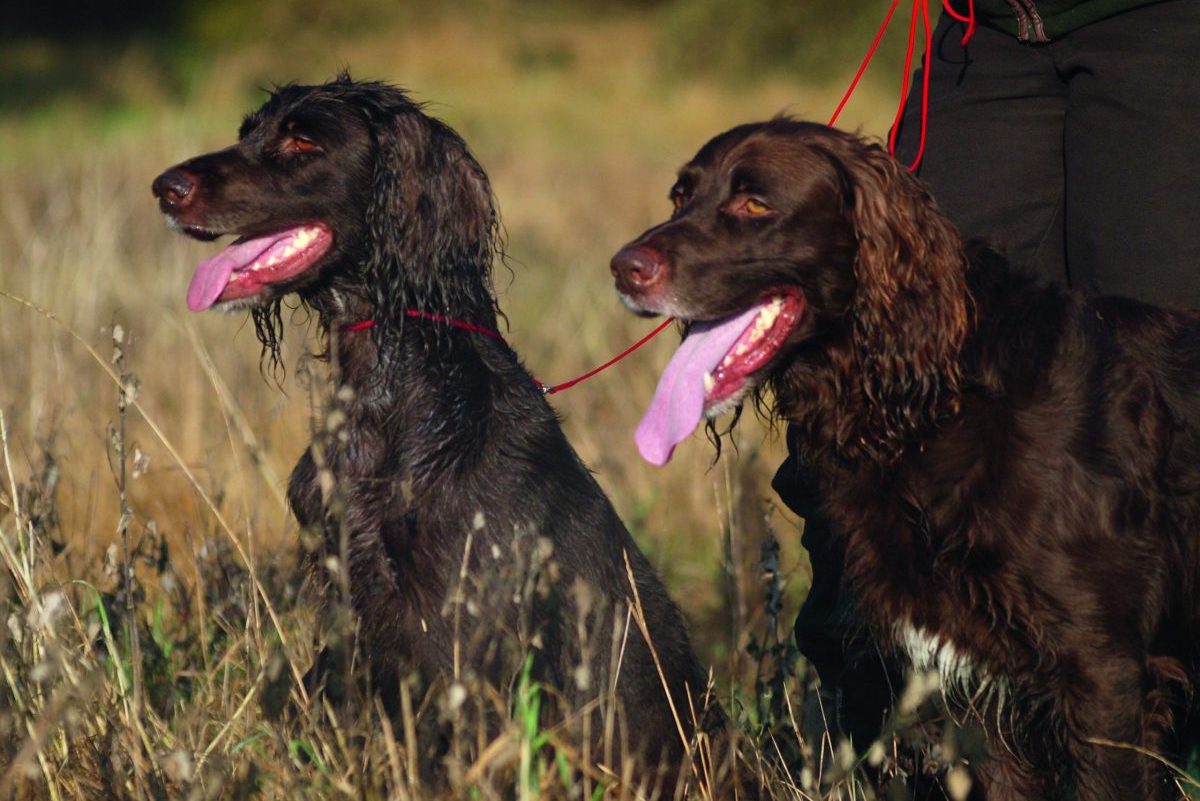A dog’s sense of smell can be 100,000 times better than a human’s
Ellena Swift explores the value of different breeds’ scenting ability and how to ensure you get the most from your dog’s nose

Gundogs must learn to distinguish between fresh and old scent, plus live and wounded or dead game
As most of you will know, our dogs’ sense of smell is the most powerful sense they have. Scientists report that a dog’s nose is anything from 10,000 to 100,000 times more acute than a human’s. For every one smell receptor a human has, a dog has at least 50. While all dogs have a more acute sense of smell, not all dogs are created equal. Some breeds are renowned for having excellent senses of smell while others not so much.
The brachycephalic breeds — those with flattened faces such as pugs — have been found to have much less sensitive noses. The breed with the most impressive nose is, unsurprisingly, the bloodhound, with approximately 300 million scent receptors. The labrador retriever, German shepherd and various other breeds follow closely behind. But it is not just the breed but also the age of the dog that can affect their scenting ability. As a dog gets older, researchers have found their sense of smell slowly decreases. (Read more on dogs losing their sense of smell.)
One truly amazing ability the dog has is a phenomenon called ‘sniffing lateralisation’. It allows a dog to sniff separately with each nostril, depending on the scents detected. Food and threats, for example, trigger different responses; this is all linked to processing pathways in the brain.
Obviously it is easy to see that breed is important if we want a talented dog with a fantastic nose. However, the ability within a breed can vary massively. Some dogs seem to have the ability to smell anything from a mile off, whereas others can stand over the item they are looking for and still be none the wiser. But why the huge variation? I have worked with dogs of varying abilities. Within our gundog breeds you have the different scenting methods of ground and air scenters. Golden retrievers, for example, are air scenters and so work differently to a labrador retriever. There are certainly pros and cons to both methods.

Foxhounds have some of the best noses in the business
Individual ability
However, the dog’s individual ability in sense of smell seems to be linked to their training. As a puppy, dogs use their noses to find their mother and her milk, so they are born instinctively using their noses to locate what they need. This is a skill that bodes well for their future careers as a gundog. As they grow up, their other senses such as sight, hearing and even touch begin to develop and be used more and more. Using their noses is a natural thing and they will often learn undesirable traits such as finding fox poo to roll in.
As we begin to train our gundogs, it becomes apparent that perhaps their noses are not quite as useful as we thought. Not because they do not work, but because the dog does not know how to work them. It is like giving a top-grade computer to someone who has only ever used a typewriter. The potential is all there, but the user now needs to learn exactly how to use this powerful piece of equipment.
This lack of understanding becomes apparent early on in training. For example; a dummy is thrown and a young dog sent for the retrieve. As it gets close, you recognise that the dog has ‘touched’ the scent of that retrieve. This is normally easily recognised by a change in the dog’s body language. Its nose is firmly down, its head seems more focused and often its tail quickens as it recognises the scent it is looking for.
Very often, if the retrieve is not located immediately, a young dog will quickly move on from that area in an attempt to find it. Often you will hear a handler exclaim “he did not believe his nose”. This is literally the case. The dog recognised the scent and briefly located it, but because it wasn’t right there, it didn’t use the information to help pinpoint that retrieve.
So its nose works fine, but the ability to use that information productively is still lacking. This is where you as the handler come in. It is one thing having a phenomenal nose, but understanding what each bit of information that nose gives the dog and knowing how to use it is vital.

Ground-nesters such as woodcock have evolutionary advantages in hiding their scent, meaning our gundogs have their work cut out
When working a gundog, it is so much more complicated than simply finding game scent. Imagine a dog in the beating line; it is hunting over ground that is going to be covered in game scent, recent and old. The dog must be able to ignore the old scent and continue hunting until it finds fresh live scent. Not only this, but it then needs to know when to follow that scent and when not. If a bird has simply run through the drive, then you do not want the dog following it.
However, if the bird has run a few metres and tucked into some cover, we want the dog to locate this and flush it. A dog hunting for a wounded bird after a drive has the added complication that it only is required to find wounded or dead game. A dog that continually pegs live game is not massively helpful. Scientists and dog trainers have consistently shown that a dog can smell stress, diseases, even blood sugar levels in a human. So it makes sense that working dogs can distinguish between the scent of a stressed or wounded bird compared to a healthy bird.
Not only this, but blood scent is a big giveaway to a dog that it is hunting a wounded bird as opposed to simply following a healthy bird. As a dog’s experience grows, it starts to understand how to use the wind to its advantage. Any dog can miss a bird if they are ‘wrong for wind’. This basically means it is upwind of the retrieve. If it is downwind, the scent is blown in the dog’s direction, meaning it can pinpoint and locate the bird. I have seen dogs run a long way down some cover to then hunt it back towards the handler because of the wind direction.
Evolution
A lot of the gamebirds in this country are ground-nesters. This means they have evolved to have the ability to reduce their scent giveaways to predators such as foxes and dogs. A hen bird will sit on eggs facing into the wind so its feathers remain flat to its body. This not only helps in keeping warm but prevents feathers being ruffled in the wrong direction, which gives scent off.
So dogs not only have to battle clever evolutionary developments but the elements as well. The weather and ground type can have a huge impact on the ability of a dog to locate its game. Heat, wind and rain will all have a massive effect. I have seen trainers leave retrieves out overnight so there is massively reduced scent on that retrieve the following day when the dogs hunt for it. This should help prepare them for difficult scenting conditions. Burying small retrieves or covering them in grass can help simulate a bird burying its chest into the ground to reduce the amount of scent it gives off.
Some dogs are certainly more naturally gifted when it comes to scenting ability, but if they do not understand how to process and use that information then they will always fall short. Training is vital, but nothing beats experience and learning their job in real-life shooting scenarios for helping them learn to use this phenomenal tool that is their sense of smell.








